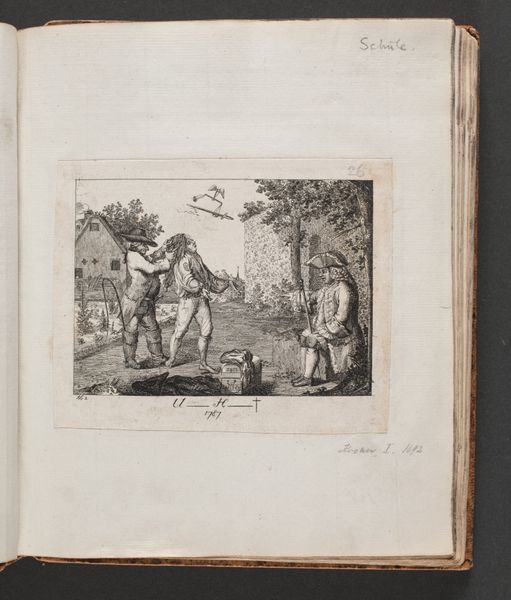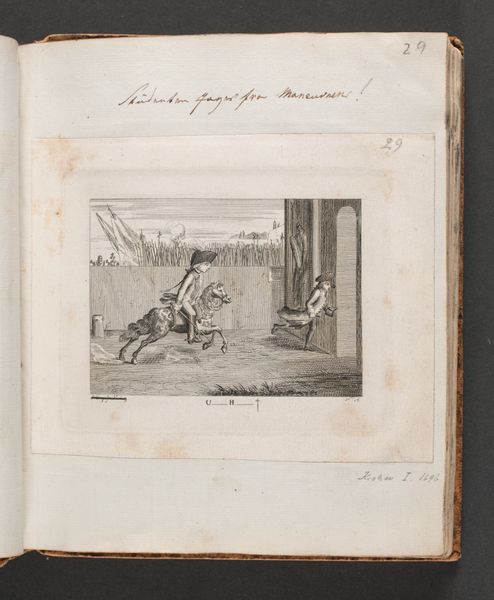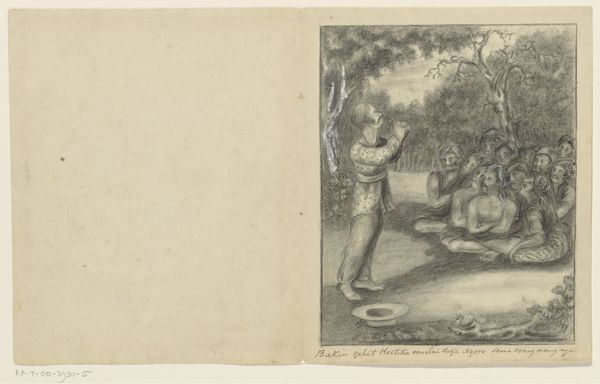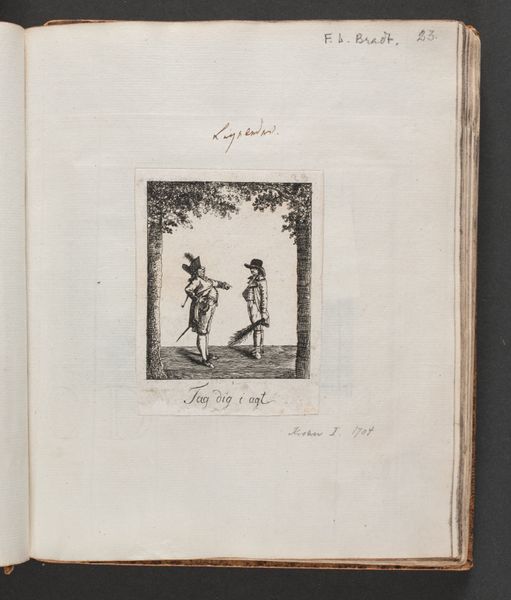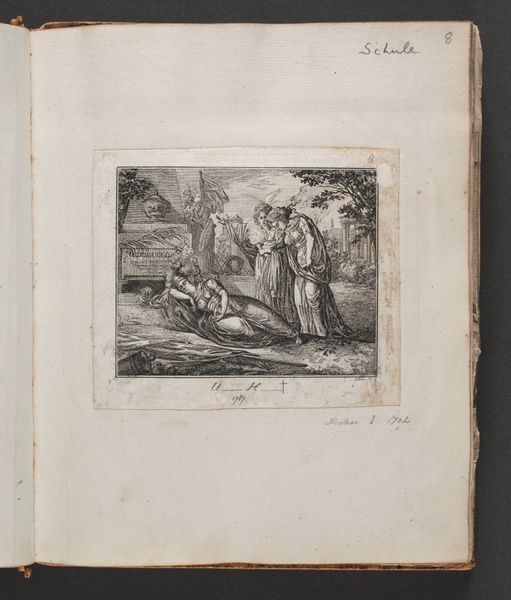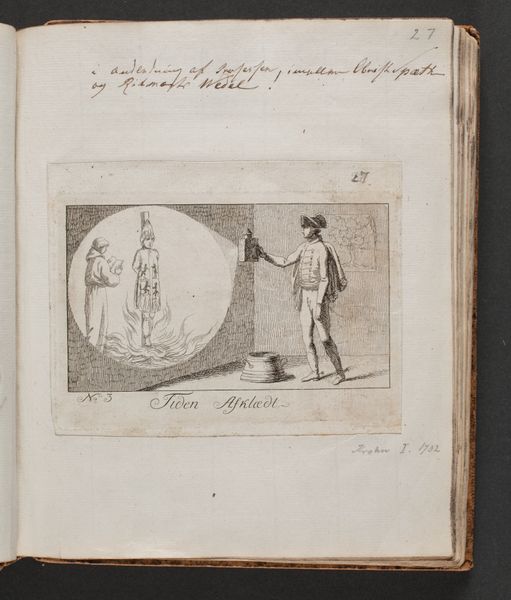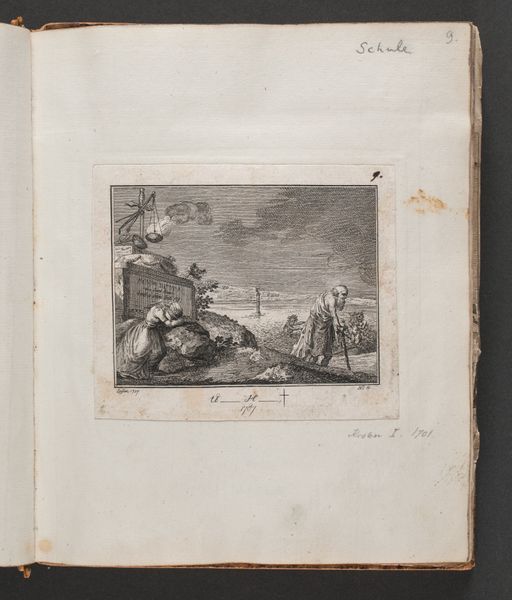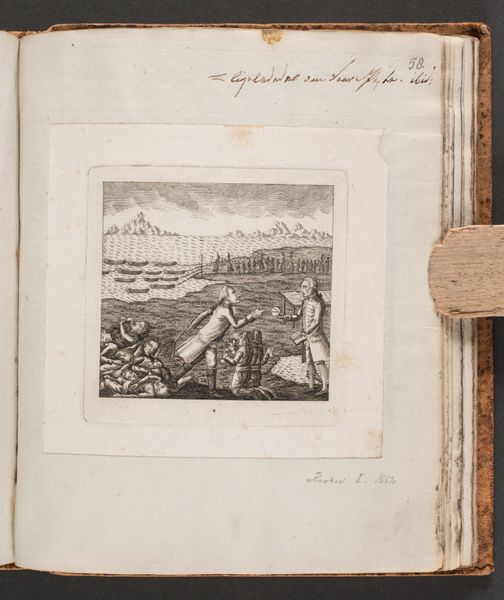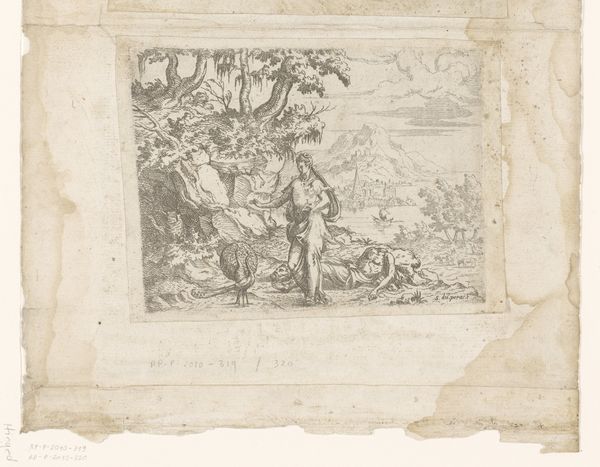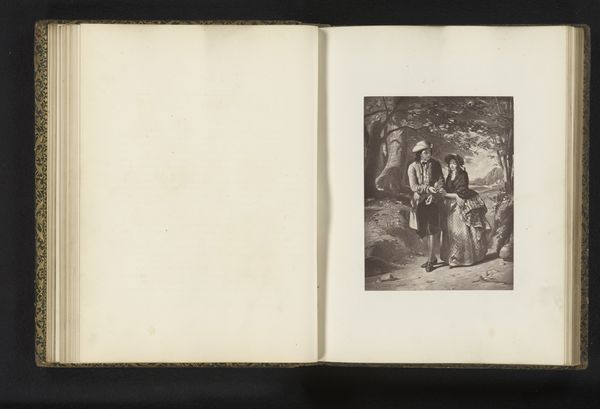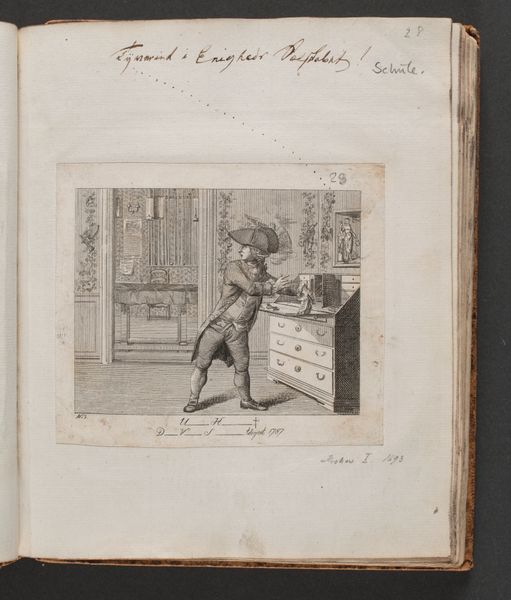
drawing, print, etching, paper
#
drawing
# print
#
etching
#
landscape
#
paper
#
history-painting
Dimensions: 92 mm (height) x 133 mm (width) (plademaal)
Editor: Here we have Georg Christian Schule's etching, "\"U(lykkelige) H(ændelser)\" Nr. 8", made in 1787. It's a small print on paper, but the detail is remarkable. The scene depicts what appears to be a historical moment, maybe a military encounter of sorts? I’m curious, what jumps out at you when you look at this print? Curator: Well, I see a dense network of labor, both physical and intellectual. Consider the copper plate—the mining of the metal, the skilled artisan engraving the image, the printer producing multiples, and the socio-economic system enabling its circulation. This wasn't a singular creation but a product of many hands, all operating within a specific historical framework. The very act of etching, of biting into metal with acid, reflects a process of transformation, of labor impacting material. Editor: That’s fascinating! I tend to focus on the visual narrative first, but you’re right, there's a whole chain of production behind it. The etching technique, could that affect the message itself? Curator: Absolutely. Etching, unlike painting, lends itself to reproduction, allowing for the wide dissemination of imagery and ideas. Who was meant to view this and why? "Unhappy events"— what specific unhappiness does this etching refer to and whose perspective is it showcasing? The consumption of prints like these became a crucial part of how events and social tensions were discussed and understood. This becomes a commodity contributing to broader political discussions of its day. Editor: So, by looking at the materials and production, we're not just seeing an image, but understanding the labor and societal dynamics of 18th-century Denmark. It's really a different lens. Curator: Exactly. It challenges the romantic notion of the solitary artistic genius. We're confronted with the interconnectedness of art, labor, and capital. What at first seems a pretty historical scene is full of cultural dynamics. Editor: Thank you. Now I look at this image seeing process, distribution and, perhaps most surprisingly, hidden social commentary, where at first I was interested in subject only.
Comments
No comments
Be the first to comment and join the conversation on the ultimate creative platform.

